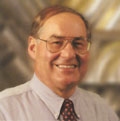 |
"Acquisitions have
always been a major component of our growth strategy at Dover. This
will continue in the future as we broaden our search for successful,
well-run companies."
Tom Reece
Chairman & Chief Executive Officer, Dover Corporation |
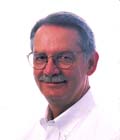
Ron Hoffman
President & Chief Operating Officer, Dover Corporation |
|
Dover's Culture and Operating Philosophy |
The purpose of
this document is to provide some insight into Dover’s culture and
operating philosophy, particularly concerning acquisitions.
We also describe several specific transactions
as examples of how the acquisition process works. |
Dover Corporation has a long and proud
history of making successful acquisitions. Over the past 45 years,
Dover has grown to its present strength by acquiring more than 100
manufacturing companies.
Our successful acquisition
strategy has benefitted not only Dover stockholders but the owners,
employees and customers of the acquired companies. |
Many Roads: one destination
In seeking potential acquisitions, Dover looks for well-managed
companies that manufacture products purchased by industrial or commercial
customers. These companies, in turn, may be in the market for investment
capital, leverageable operating capabilities, or technical support.
Companies that are first in their niche markets are
attractive candidates for acquisition; such historically successful
enterprises fit well within Dover’s decentralized corporate structure.
No acquisition follows an identical pattern. Dover acquires
some companies as independent stand-alones; others become part of
the Dover organization as add-on companies to an existing business.
Both routes to Dover have worked extremely well for the businesses
involved. One way may be right for your company.
What makes a Dover company?
Starting in 1955 with four companies, Dover today is comprised
of about 50 independent operating companies. Most are number one
in their niche market. Each manufactures products to be purchased
by industrial or commercial customers. And, each consistently outperforms
its competition.
Companies are "Dover like" based on how well they are
run rather than how well they fit into a formal model or theory
of growth.
Dover doesn’t demand synergy among its various companies.
Dover has always taken the position that its role is not to develop
operating strategies; that responsibility is left to company management
teams.
Allowing skilled entrepreneurs the scope to do what
they do best—run their companies and find new ways to grow them—has
paid off handsomely for Dover Corporation and its stockholders.
Dover has enjoyed strong and continuous growth since its inception—sales
and earnings have grown about 14 percent compounded annually since
1955, and stockholders’ returns on their Dover investment have consistently
surpassed the S&P 500. |
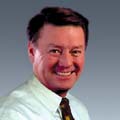 |
"It takes patience
and persistence to identify Dover-like acquisition candidates."
Tim Sandker
President & Chief Executive Officer, Dover Industries |
| |
| |
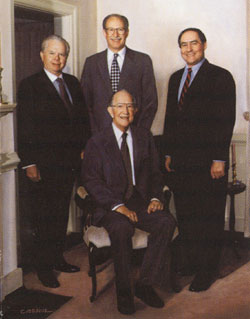
With Fred Durham (seated), CEO from 1956 to1966, are the three
succeeding CEOs: Tom Sutton from 1966 to1981, Gary Roubos
from 1981 to1994 and Tom Reece since 1994. |
A proven formula for success
To understand Dover’s operating style, it helps to know something
of the company’s history and the role played by its leaders over
the years. Dover traces its roots to a group of investors led by
George Ohrstrom, Sr. A high-flying investor in the ’20s who, like
many others, reaped some failures in the ’30s, Ohrstrom ultimately
hit upon a conservative but successful investment strategy. He sought
out financially successful family or closely-held businesses whose
owners not only wished to monetize their assets but also hoped to
provide a secure future for their employees and remain personally
involved with their companies. At this stage in his life Ohrstrom
himself had little interest in presiding over complex bureaucracies.
He wanted a group of modestly-sized, profitable enterprises run
by first-class people who understood their businesses and customers
and who could continue to be successful.
Ohrstrom’s earliest acquisitions—Rotary Lift (a manufacturer
of automotive lifts), C. Lee Cook (a manufacturer of compressor
components), Norris (a manufacturer of oil and gas production equipment),
and Peerless (a manufacturer of gas fired space heaters)—each fit
this description. They had a simple approach to manufacturing products
for niche markets. Each was highly profitable with strong cash flow.
Each would continue to be run by the same management team after
joining Dover.
These four companies combined to form Dover Corporation
via an Initial Public Offering (IPO) in 1955. From this nucleus
the Dover culture has been crafted by the four CEOs who succeeded
George Ohrstrom who died shortly after the IPO. While preserving
the founding philosophy, each leader has made his own indelible
contribution to building the Dover of today.
Fred Durham, Dover’s first CEO, set the example. Durham,
who had sold C. Lee Cook to Ohrstrom and remained as president,
firmly believed that the key job at Dover was that of president
at each of the operating companies. Right from the start, he set
the tone of keeping corporate functions and staff to a minimum.
Tom Sutton, Durham’s successor and the company’s second
CEO, had previously been president of Dover’s OPW business. Another
zealous advocate of decentralized management, Sutton was instrumental
in Dover’s significant growth during his 15-year term. In order
to supplement internal growth, Sutton focused on attracting new
companies to Dover and initiated the active acquisition program
which remains a cornerstone of Dover’s growth strategy.
Gary Roubos, president of Dieterich Standard when he
brought it to Dover on behalf of the principal owner in 1975, became
CEO in 1981. He reorganized the company into the four Independent
Subsidiaries. Each Independent Subsidiary was to be like Dover in
the way it operated. It is to these Subsidiaries—Dover Diversified,
Dover Industries, Dover Resources, and Dover Technologies—that the
individual operating companies now report. Under this format, the
Subsidiaries became clones of Dover to further extend and decentralize
the acquisition program.
Current CEO Tom Reece is the former president of three
Dover companies: Ronningen-Petter, De-Sta-Co and Norris. Under his
leadership Dover has accelerated its tilt toward growth by placing
a greater challenge on the company presidents to grow their businesses.
As a direct result of this initiative, strategic add-on acquisitions
by Dover’s independent operating companies have greatly increased.
There has also been a significant increase in strategic growth initiatives
including joint ventures and international expansion projects.
|
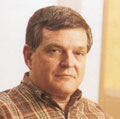 |
"In technology-intensive
acquisitions, we seek companies that can be platforms for future
investment or add to the growth of existing platform companies."
John Pomeroy
President & Chief Executive Officer, Dover Technologies |
| |
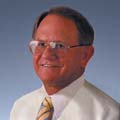 |
"Successful
acquisitions depend on retaining and motivating top-flight management
teams."
David Ropp
President & Chief Executive Officer, Dover Resources |
| |
A lean headquarters staff
Dover leaves to its independent operating companies many management
tasks typically handled by corporate headquarters. By managing their
own human resources, legal affairs, engineering, research and development,
strategic planning, purchasing and marketing, Dover companies can
proactively respond to changing customer needs without becoming
entangled in bureaucratic red tape. In fact, all but about 50 of
Dover’s approximately 30,000 employees work directly for one of
its operating companies.
Why does Dover’s corporate staff remain so small? First,
it is much easier to keep corporate functions from multiplying when
there is very little bureaucracy to begin with and no one has any
turf to defend. In addition, because Dover is comprised of many
companies, each serving a unitary market with only targeted product
offerings, there is little need for integration or coordination
of functions across company lines. The bottom line is that, at Dover,
it is expected that the president of each operating company has
the ultimate responsibility for the healthy growth of his or her
business. In this environment, corporate bureaucracy would only
get in the way.
An organization of leaders . . . linked by trust
The Dover culture is founded on trust based on mutual respect.
Within Dover, a company presidency is not a stepping stone to other
positions. Rather, it is the pinnacle of importance for each individual
company and for Dover itself. Dover’s company presidents set the
direction for their own companies, make their own decisions, and
nurture and grow their own organizations.
The expectation is, of course, for excellence. Most
Dover companies enjoy robust growth. Outstanding financial performance
is the norm, and monthly results at each company are shared throughout
the organization. Company presidents are continually challenged
to improve and perform well in their own industry as well as among
their peers at Dover.
For 45 years, Dover’s decentralized management style
and policy of acquiring high quality manufacturing companies with
a commitment to excellence have produced long-term earnings growth,
high cash flow and superior returns on stockholders’ equity. Dover
continues to seek new and compatible businesses with management
teams that can prosper within our decentralized operating environment.
Typically, these management teams are enriched by the
opportunity to freely and openly share experiences with their peers
from other Dover businesses. |
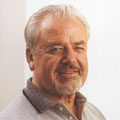 |
"Successful Dover
companies are market leaders committed to continuous improvement."
Jerry Yochum
President & Chief Executive Officer, Dover Diversified |
| |
| |
Searching For The
Right Fit
"High quality earnings growth" is a watchword at Dover.
That’s why our business strategy can be simply stated: we support
the growth plans of our existing businesses while utilizing our
strong excess cash flow to acquire new Dover-like companies.
Our criteria for acquisition candidates is straightforward:
- We seek manufacturers of high value-added engineered products.
- Our focus is on components, equipment and machinery sold to
a broad customer base of industrial and/or commercial users.
- We prefer niche-oriented market-leading companies with either
#1 or a strong #2 market position.
- Dover-like companies have a strong ethic of focusing on customers
and providing high value-added customer solutions.
- Candidates should have strong national or, preferably, international
distribution.
- We usually expect the management team to stay in place.
- We typically acquire only those companies with demonstrated
outstanding financial performance records and solid prospects
for future growth.
|
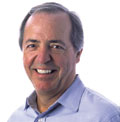 |
"We
take pride in our acquisition program. We know it must balance the
interests of many parties, and we work hard to make that happen."
Bob Tyre
Vice President, Corporate Development, Dover Corporation |
| |
If our acquisition criteria sounds
rigorous, it is! On the other hand, once a company joins Dover,
our intention is that it remain forever. It is important for each
side to avoid mistakes. The fit must work both ways for acquisitions
to be successful.
Although acquisitions at Dover never follow an identical
pattern, they tend to fall into two broad categories. Dover acquires
some firms as independent operating companies—these we call "stand-alones."
We also acquire businesses which will become part of an existing
stand-alone company—these we call "add-ons." Either path to
Dover can be appropriate, depending on the circumstances of individual
companies. Both acquisition models have worked very well in the
past. The two can be differentiated this way:
Stand-Alone Acquisitions:
Typically, these are larger businesses which fit the Dover mold
but offer no synergy with existing Dover companies. Stand-alone
companies report directly to the Dover Independent Subsidiary whose
CEO leads the acquisition team. The criteria used to judge these
acquisition opportunities is very strict, and Dover’s reliance on
existing management is greatest in these situations.
Our approach has been to make few, if any, changes
in stand-alone acquisitions and to have the ownership transition
virtually transparent to the marketplace. We look at stand-alone
candidates as platforms for growth, offering opportunities to further
investment through capital expenditures and/or additional add-on
acquisitions.
Add-On Acquisitions:
The characteristics of these companies can vary greatly. The primary
criteria here is that the candidate fit the strategic needs of one
of our existing companies. Unlike stand-alones, these add-ons should
offer synergistic opportunities to improve performance. In some
cases, very few changes are made to the acquired business since
its operations and products are viewed as complementary. At other
times, add-on companies are integrated extensively with an existing
company and significant changes are introduced. Since add-ons become
part of an existing Dover company, that company president leads
the acquisition team.
Dover is a growing family of successful companies and we look
forward to meeting new opportunities.
|
| |
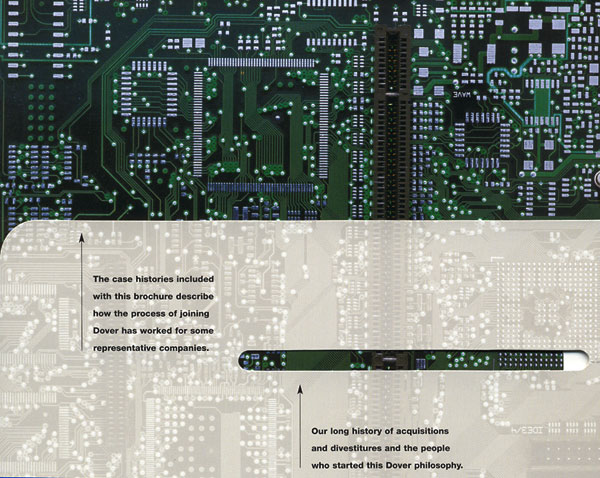 |
|